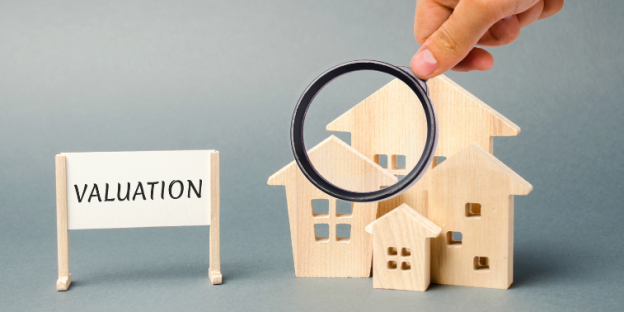What is Blockchain Architecture? (Structure, Core Components and Benefits)

Blockchain came in 1991 with the sole purpose of maintaining the digital document. Later on, the technique was taken over by Satoshi Nakamoto, and in 2008 he brought to the limelight the first-ever cryptocurrency – the blockchain-based project called Bitcoin. Bitcoin was the only crypto that was not bought but mined.
Though cryptocurrencies are not acknowledged as Dollars or Dinars, their financial worth is the same as a physical currency and their flow needs to be channeled through a robust platform.
Also Read: How to Create a Bitcoin Wallet App: An Ultimate Guide
Blockchain is a decentralized and highly secured network protocol that lets people all around the world trade in Bitcoins or cryptocurrency. So far it is the most trusted technology to preserve and maintain the records of crypto transactions.
Due to changes in currency rates, people take crypto as an opportunity to invest for a good fortune, technology like Blockchain has made it even more easier and secure. If you want to invest in cryptocurrency or more than that if you want to create your own cryptocurrency, here is the complete guide to what is Blockchain architecture, with mechanisms, core components, and ultimate benefits that you do not want to miss.
Table of Content
What is Blockchain Architecture?
Difference Between Database and Blockchain Architecture
Benefits of Blockchain Architecture
Types of Blockchain Architecture
Core components of Blockchain Architecture
Developing the Blockchain Architecture
Blockchain Architecture – The Skillset
Key Principles of Blockchain Architecture
Conclusion – Develop Your Own Blockchain Architecture
What is Blockchain Architecture?
As the name has it, a blockchain is a chain of blocks that contain information (database) and is linked together in a secured peer-to-peer network. Blockchain links the computers but instead of a centralized server, the whole network is decentralized.
For instance, Google Docs – there were days when Word files were shared and then we used to wait for hours for the other participant to make changes and re-send the same document. Google Docs help us share the platform with other participants and they can access the same platform simultaneously. Moreover, the changes are visible in real time. Similarly, blockchain allows the distribution of digital information and this distribution ledger promotes transparency and data security for all the participants.
Blockchain architecture always comes into the role when someone is talking about the crypto trade. More than that the technology helps software development companies to develop new and robust solutions for cryptocurrencies, record keeping, and smart contracts.
Difference Between Database and Blockchain Architecture
The major difference between the two is decentralization.
Database
The architecture of the World Wide Web uses a client-based central server where all the information is stored under a single roof and is easy to access and update. The point to be noted here is that the server is the centralized database and is controlled by the administration with permissions.
On the other hand,
Blockchain Architecture
Blockchain architecture is a distributed and decentralized network where each participant can maintain, approve, and update the new entries. In short, the entire system is controlled by its participants (anyone with the blockchain network). The participants make sure that the entire database is in order which results in easy data validations and data security.
In the end, blockchain is the decentralized and distributed ledger of transactions that are done under a P2P network – the network binds several computers and the data cannot be altered without the harmony of the entire network. This saves us from the threat of data laundering.
As said blockchain is simply the list of blocks holding specific information. These lists can be stored on the PC in a file (.txt format) or in the form of a database.
There are two data structures a blockchain holds (i) pointers and (ii) linked list
Pointers are variables listing the information about the location of another variable (points out to the position of another variable) while the linked list has a sequence of blocks with each block holding specific data and links to the following block.
(source: mlsdev)
Benefits of Blockchain Architecture
1. Cost-Effective
It calls for a shedload of money to hold the databases on a centralized platform (www), it is undoubtedly a secure way of preserving and organizing the current data, but blockchain serves the same purpose to a larger extent as the information stored in the blocks are interlinked with each other and no one can alter the data without altering thousands and lacks subsequent blocks.
2. Secured Data Processing
The data once entered is hard to tamper with due to blocks linked via information with each other. Record validation too takes time as the data processes for each network independently rather than on a centralized server. So one needs to compromise with the performance speed, it is compensated when it comes to data security and validity.
3. Fetching the previous data
The blockchain architecture allows you to check the transaction history anytime. This is a constantly growing list, whereas the centralized database is just a snapshot of the information in the present (with no scope of accessing the previous data).
Types of Blockchain Architecture
Blockchain architecture is segregated into three different categories:
Public Blockchain Architecture
As the name depicts, in public blockchain architecture the database is accessed and updated by anyone who is willing to participate (like crypto blockchains). Crypto blockchain architectures are open to all who want to participate.
Private Blockchain Architecture
On the contrary, there is a private blockchain system that is under the control of the members of a specific organization. Though the entire process remains the same, the invitation and the participation are limited to the members of a single organization.
Consortium Blockchain Architecture
The cluster of few organizations can access consortium blockchain architecture. In the consortium, the procedures are set up and controlled by the initially assigned users.
Here is the comparison between the three:
Functions |
Public Blockchain Architecture |
Private Blockchain Architecture |
Consortium Blockchain Architecture |
| Consensus determination | All miners | Works within organizations | The selected set of nodes |
| Read Permission | Public | Public/Restricted | Public/Restricted |
| Immunity Level | Impossible to temper | Could be tempered | Could be tempered |
| Efficient use of resources | Low | High | High |
| Centralization | No | Yes | Partial |
| Consensus process | No need for permissions | Needs permission | Needs permission |
Blockchain is a distributed ledger where all the members have a copy. However, each type varies in centralization and decentralization which is in the hands of the blockchain developer who designs and the person who controls the ledger.
In public, all the members hold the right to access and can take part in the agreement process, whereas private is more centralized giving access to only the authorized personnel and with utmost privacy.
On the other hand, the public blockchain architecture takes more time to process the transactions than the private blockchain architecture as it needs massive computation power to process the data for each P2P network separately.
Core Components of Blockchain Architecture
| Node | User or computer with access to the blockchain architecture (each has a copy of the blockchain ledger). |
| Transaction | The process of distribution of the information across the entire network of computers on the blockchain. |
| Blocks | A data structure that is there to keep the transactions and is distributed to all the computers (nodes) in the network. |
| Chain | The series of blocks is placed in a specific order. |
| Miners | The nodes within the P2P network perform the verification process before making any changes to the blockchain structure. |
| Consensus | The blockchain protocols on which every operation depends. |
The Blocks
Each block holds data with the hash of the block and the previous block. The information stored in each block entirely depends on which blockchain architecture we are using.
For instance a crypto blockchain, the blocks hold the information about the sender, receiver, and the number of coins with the hash of the simultaneous blocks. The hash is the authentication (a series of letters and digits). Every block owns a hash and the change in the block will inevitably affect the hash.
The end player here is the previous block with the link to the current block. The previous one links to the current and the current to the new, this helps to build a chain or a series of blocks. Any unscrupulous attempt to tamper with the information of the current block will make all the previous blocks incorrect and ultimately the blockchain system will become invalid.
It is possible to adjust the blocks with the help of a strong computer processor, the user can slow down the process of new block creation and the solution is called proof of work. For Bitcoin, this validation takes around 10 minutes including the work done by the nodes that are within the Blockchain Architecture. The miners then keep the transaction money as a reward for verifying the blocks.
The new block is created > each node receives the full copy of the system > each node verifies the ledger for accuracy > after the validation the new block is added to the blockchain.
All the nodes with collective decisions create a consensus – which means the set of protocols based on which the blockchain will function.
For Example, there is a consensus that the transaction amount will be cut in half once the blocks reach 200,000 – that means the verification reward is 10 BTS for a block then the value will be cut to half after every 200,000 blocks.
So blockchain is a completely secured network with all its nodes verifying the process with consensus protocols. Data tampering is only possible if all the blocks are changed, recalculate the proof of work for each block, and control more than 50% of the nodes in the peer-to-peer network.
Developing the Blockchain Architecture
Designing and Developing
As blockchain is a complicated and decentralized platform one needs professional blockchain developers to create the architecture. One can’t risk its functionalities with a freelance developer. The optimistic design includes working on functional specifications, UX/UI designs, and the architectural plan as the base of its development.
It is mandatory to acknowledge the app’s functionality with user roles and a robust system plan. Make sure that you and the blockchain app development company are on the same page even before you start with the development of the architecture.
If you are planning to build a blockchain system you need to consider the blockchain network and the blockchain code.
There are some open-source solutions at the earliest convenience of the blockchain designers and developers, the widely acclaimed is Hyperledger by Linux – the Hyperledger composer provides the set of tools for developing the blockchain architecture. The other solutions in the market are Ethereum and Corda.
Developing the network
The P2P network involves the nodes, which means the persons who will access and control the blockchain architecture. So an organization that is planning on developing a blockchain architecture already needs to maintain a platform that connects. The nodes are already there.
For instance
There is a lot of risk in every step of diamond manufacturing to its sale. Moreover, the end customers are worried about the authenticity of the stone, and government institutions want to track the flow of the diamonds in the market. Blockchain is the perfect architecture to eliminate the risks.
The architecture including:
-> Diamond Manufacturers
-> Government Regulators
-> Diamond Transporters
-> Diamond Sellers
The blockchain system will bind all these parties in a P2P network and each individual will act as a node. As said above, all the verifications are done by the nodes. Each of the nodes will receive access to the synchronized data and the copy of the ledger which will help them keep the record of every step from diamond manufacturing to transport and selling.
In order to outline the processes happening at the same time, there is an Ordering Service. The service is shared among all the nodes to decide the transaction and the order. There is a Membership Service Provider that permits the entry of the users inside the network.
At last, all the transactions are stored in the general ledger (data including the photographs, extraction place, color, serial number, place of cutting, purification site, selling point, etc)
Code Creation
The blockchain network is set to achieve the purpose of creating a link between the participants. All the participants must agree with the type of business transactions inside the blockchain structure. Physically this is done via legal agreements but in blockchain coding, this is called Smart Contracts (also known as chain code).
On legal papers, the blockchain contract has the list of participants, the assets, and the transactions but in the core, there is a Transactional Processor Function based on the JavaScript technology which lays out the process once the transaction is done. Javascript is the elite when it comes to core programming, the technology is responsible for developing some robust blockchain and other app structures that are highly interactive and scalable.
Blockchain Architecture – The Skillset
Blockchain development is a high-end task. Paying heed to the security protocols, UI, and functionality of the blockchain architecture, at every step the skillset and the correct implementation of the core technology will be judged. As the entire system is linked and interlinked, one wrong implementation will reflect clearly in the system.
One must have a strong hand in Computer Science and Engineering to make Blockchain development a full-time career. As technology is advancing and there is a need for synchronization of the processes, blockchain is here to remain.
The entire system functionality depends on the core coding for which the developer needs to be aware of the programming languages such as C++, Python, C, Java, and Ruby. also the web development technologies like HTML, CSS, and Node JS.
One needs to learn the contract-based programming language Solidity to write Smart Contracts (the programs stored in the Blockchain automatically exchange the coins upon transaction).
Moreover, for custom business software development, the developer needs to have a deep insight into the business requirements and operations so that cooperation is not compromised.
Key Principles of Blockchain Architecture
| Cryptography | The trust is built over complex computations that Blockchain possesses and the cryptographic proof that is with the personal consensus of the involved parties. |
| Immutability | Records in the blockchain are impossible to change or delete. |
| Provenance | As blockchain is a scalable archive, it is possible to trace the origin of every transaction inside the blockchain ledger (in case of emergency or discrepancy). |
| Decentralization | Each participant (node) has access to the whole distributed database. |
| Anonymity | The blockchain participants are recognized by their generated address which safeguards their original identity. |
| Transparency | It needs huge computing power to tamper with the blocks and to overwrite the blockchain network completely. |
Conclusion – Develop Your Own Blockchain Architecture
From the aforementioned descriptive, it is clear that blockchain is the best solution for trade, legal, and business perspectives. In large chains, there is a need for synchronization and anonymity among the members. Blockchain development requires a skill set that you can easily avail by outsourcing your requirements to professional software developers who have mastered the coding languages and are well-versed in the scope of blockchain technology. There has to be a vision of how one can emulsify the technology in the software for optimistic results.
Blockchain functionality is capable of accelerating transactions, reducing the cost, no intervention by third parties, robust digital interaction, and a lot more.
Blockchain technology with its transparent mechanism and secured protocols can be used in any industry or business which makes it the next-gen solution. In fact, many solutions rely on blockchain TenX (to spend cryptocurrency), EOS.IO (functionalities for decentralized apps), Augur (for predicting market analysis), and so on. Blockchain is the smart solution to traditional problems (security, transparency, anonymity, and scalability).








Good information shared here about blockchain architecrture